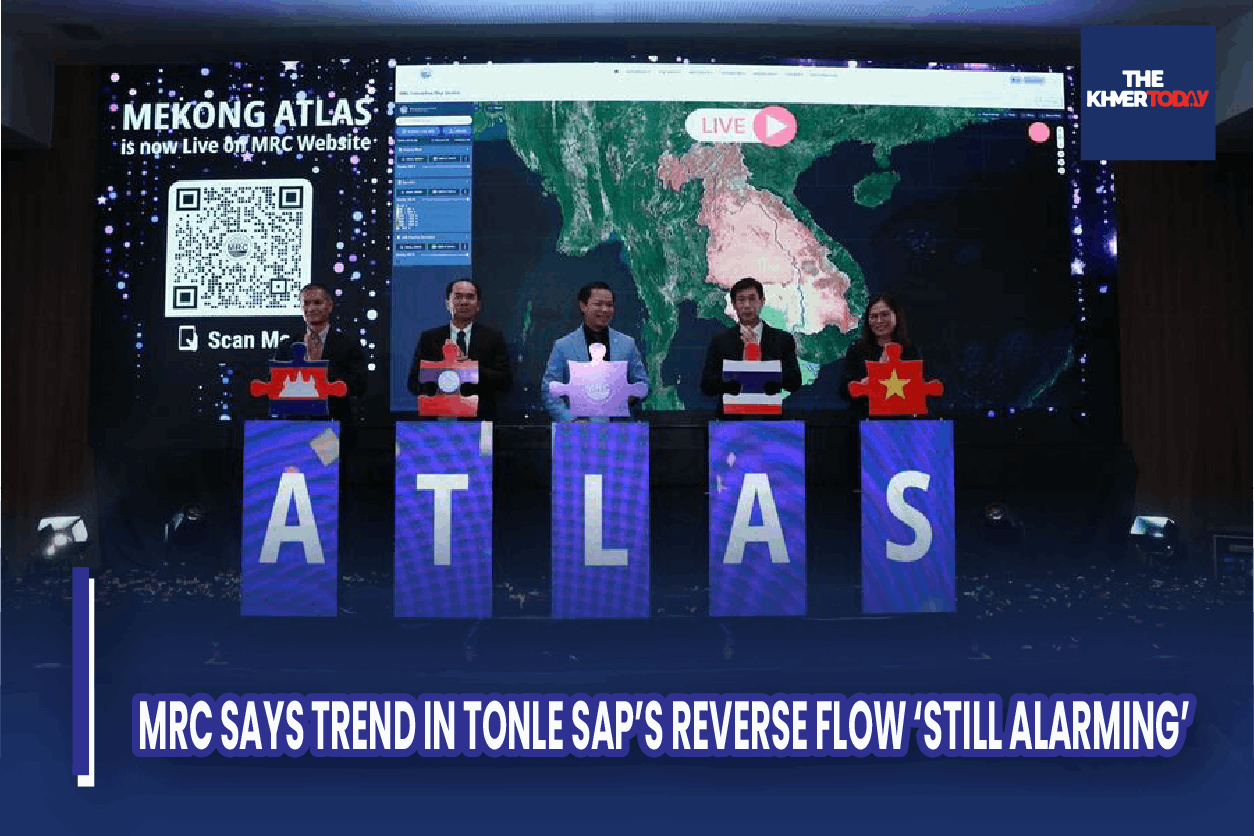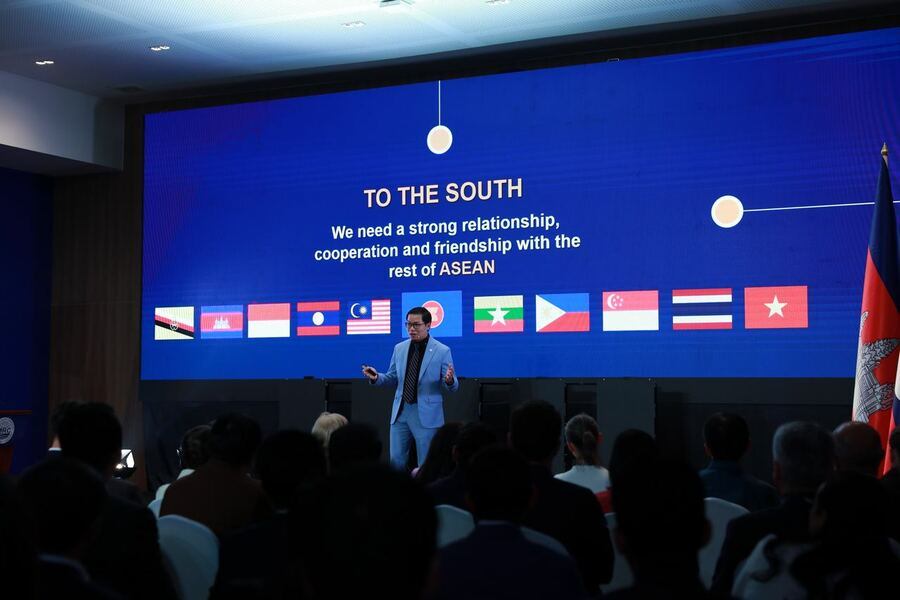MRC Says Trend In Tonle Sap’s Reverse Flow ‘Still Alarming’

Phnom Penh, April 08, 2024 --
The Mekong River Commission (MRC) says the trend in the annual reverse flow of the Tonle Sap River during the wet season remains disturbing.
In his annual State of the Mekong address, Anoulak Kittikhoun — Chief Executive of the MRC Secretariat in Vientiane — said the Mekong had “changed dramatically, for better and worse” over the past five to ten years.
Speaking in the Lao capital on Friday, Dr Anoulak noted rapid growth in the region, with the economy of the Lower Mekong Basin in Cambodia, Laos, Thailand and Vietnam valued at US$63 billion.
“All Mekong countries have made considerable progress in enhancing living standards and well-being,” he said.
Food availability and access to drinking water, basic sanitation, and electricity have “increased across the board.” At the same time, “rates of malnutrition and water-related diseases have decreased.”
But Dr. Anoulak said hydrological and meteorological conditions suffered a “rollercoaster” last year — with drought in the central part of the Lower Mekong in the dry season and historically low water flows in the wet season.
TONLE SAP: LATER, SMALLER AND SHORTER REVERSE FLOWS SINCE 2020
“This continued to impact the reverse flow into the Tonle Sap,” he said.
From mid-August last year, the reverse flow reached its minimum acceptable level. “But the trend is still alarming,” the Lao chief executive said.
“Since 2020, the reverse flow always happens late, it expands way less than it should, and lasts much shorter than usual.”
The reverse flow refers to the huge volume of water flowing down the Mekong pushing the flow of the Tonle Sap River “upstream” towards the Tonle Sap Lake in the middle part of the wet season.
The flow returns to normal in the early dry season as similarly huge volumes of water flow out of the lake towards the Mekong.
‘SIGNIFICANT SEDIMENT DROP’ IN CAMBODIA AND VIETNAM
On sediment flows, Dr. Anoulak said the MRC observed “some stability or slight reduction” between Chiang Saen in northern Thailand and Kratie in eastern Cambodia.
“We are concerned, however, with a significant sediment drop further downstream,” he said.
Since 2009, the chief executive said, sediment flows have plunged 70 percent in Phnom Penh and 50 percent in the Vietnamese town of Tan Chau — across the border from Leuk Daek district in Kandal province.
Moreover, “in the Mekong Delta, a recent study finds that 35 to 55 million cubic meters of sand are being taken out compared to only 2 to 4 million cubic meters that are naturally going in.”
Dr. Anoulak said changes in flows, sediment and salinity intrusion “have not seriously affected the overall water quality" of the Mekong. Of 22 measuring sites, 15 are rated “excellent” and 5 are “good”.
FISHERIES FACE ‘SIGNIFICANT THREATS’ ACROSS BASIN
But “wild fisheries in general are facing significant threats throughout the basin from overexploitation, drought, and infrastructure barriers.”
The Tonle Sap system along with the Sekong, Sesan and Srepok rivers in northeast Cambodia are suffering “declining species and catch,” he said. "But we cannot blame one factor alone.”
The chief executive said MRC data showed “stability in fish abundance in other parts of the basin” — namely from the Chinese-Lao border to Khammouane in central Laos as well as in the Mekong Delta.
On fisheries management, Dr. Anoulak announced a U.S.$12 million investment from the Global Environment Fund "to improve value chains, reconnect swim ways, and offer viable livelihood alternatives.”
He said the MRC also had a US$16 million commitment from Germany for ecosystems and livelihoods, and would announce new funding from Canada, Germany, South Korea and the United States later this year.
‘NEED TO LOOK NORTH, SOUTH AND BEYOND’
Dr. Anoulak said the four Lower Mekong countries “need to look north, south and beyond” at the same time, highlighting the importance of strong ties with China, Myanmar and the rest of ASEAN.
After signing a memorandum of understanding (MOU) with Indonesia earlier this year, “we hope other non-Mekong ASEAN member states will follow and become partners of the MRC.”
As part of MRC-ASEAN cooperation, Dr Anoulak pointed to the upcoming Second ASEAN-MRC Water Security Dialogue in September, ahead of the ASEAN and Related Summits to be hosted by Laos in October.
“In the future, there will be special MRC Summits on the sidelines of the ASEAN Summits,” he said.
The MOU signed with Indonesia in January focuses on areas like water-resource management, irrigation, climate change, disaster-risk management, fisheries and tourism.
At the signing, a senior Indonesian diplomat said: “Indonesia recognizes the importance of the Mekong river basin to the Mekong countries and broader ASEAN region.”
